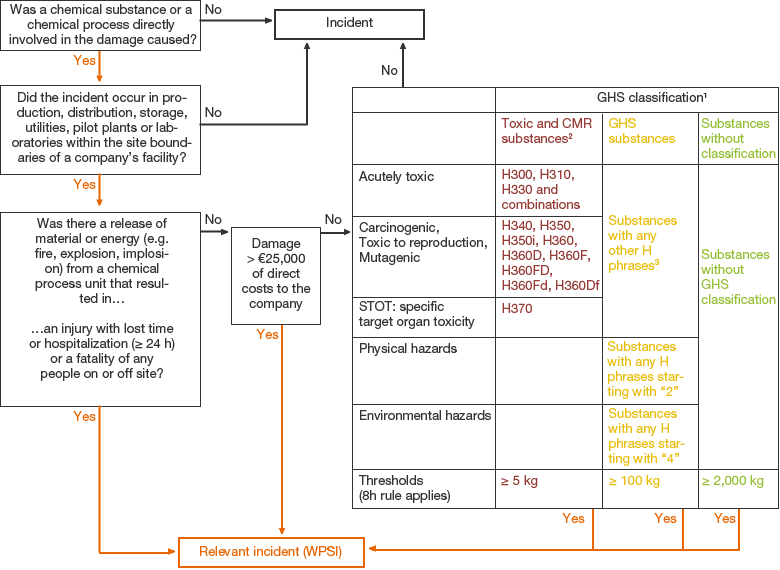Accidents and Incidents
No matter how many preventive measures are taken, accidents and environmentally relevant incidents can never be completely ruled out. At WACKER, we make sure we learn from such events to prevent their recurrence.
We use the criteria of the European Chemical Industry Council (Cefic) to assess safety and environmentally relevant events (see diagram). These include substance spills, fires and explosions, as well as incidents that have no adverse impact on people or the environment, e.g. if all of a spilled substance was contained by the catch basin or the sewer system and was eliminated by in-plant wastewater treatment facilities.
We depict the number of safety-relevant and environmentally relevant incidents in relation to 1 million hours worked. This performance indicator, which we call the WACKER Process Safety Incident Rate or WPSIR, is tracked across the group so that we can improve our safety management record. The increase in our WPSIR during the reporting period is due to two factors. First, our new sustainability reporting IT system (SPIRIT) has enabled us since 2015 to record and categorize incidents more effectively than in the past. Second, commissioning of the Charleston site (USA) led, in particular, to a rise in the number of incidents during 2016.
Evaluation of Events According to Cefic Criteria

1 GHS = Globally Harmonized System of Classification and Labeling of Chemicals
2 CMR = substances that are carcinogenic, mutagenic and toxic to reproduction
3 H phrases = describe hazards emitted by chemical substances or formulations;
H phrases that begin with: 2 = physical hazards, 3 = health hazards, 4 = environmental hazards
|
|
|
|
|||||||||
|
2016 |
2015 |
20142 |
|||||||||
|
|
|
|
|||||||||
|
||||||||||||
|
|
|
||||||||||
Group |
46 |
35 |
22 |
|||||||||
Groupwide environment- and safety-related incidents per 1 million hours worked3 |
1.6 |
1.2 |
0.8 |
|||||||||
|
|
|
||||||||||